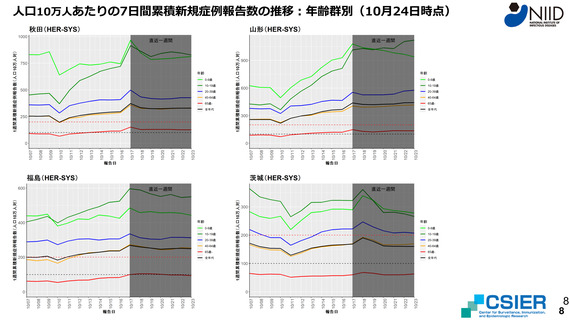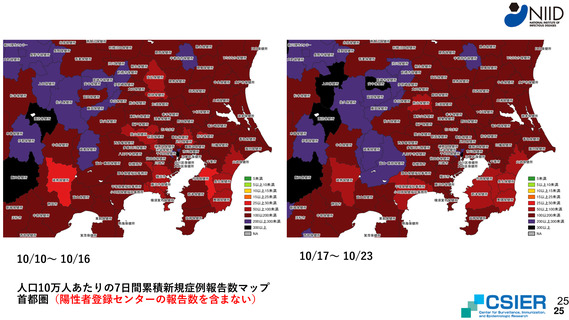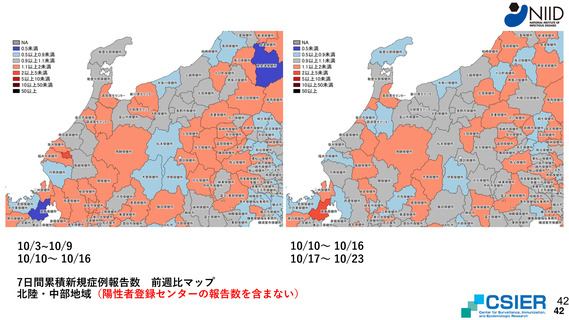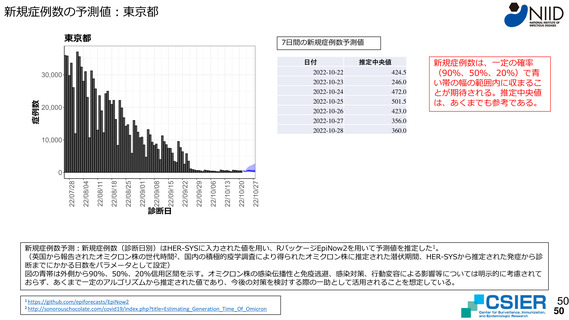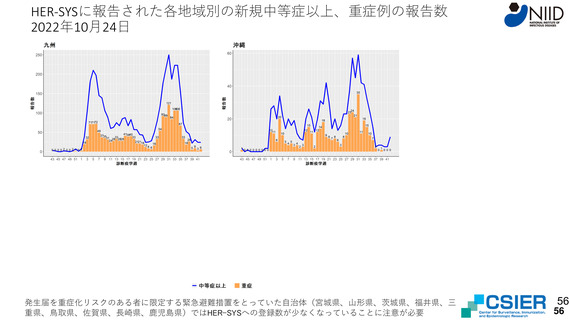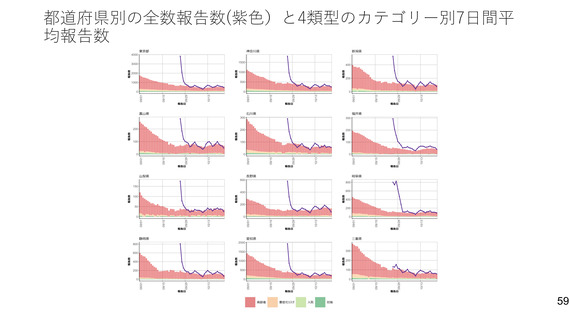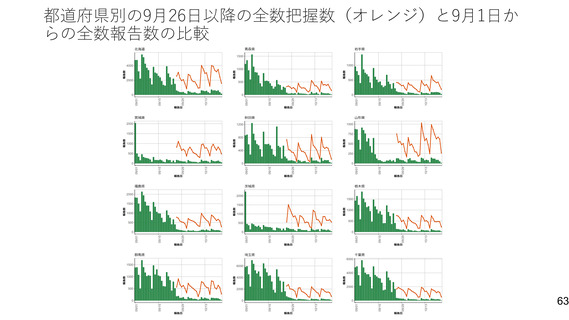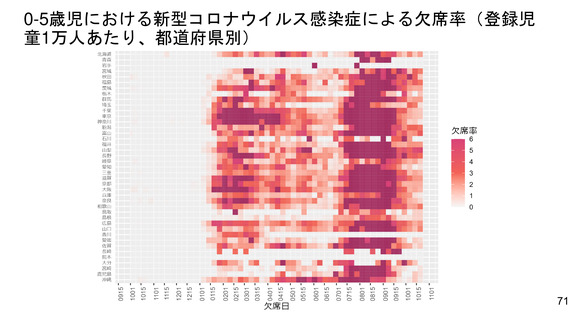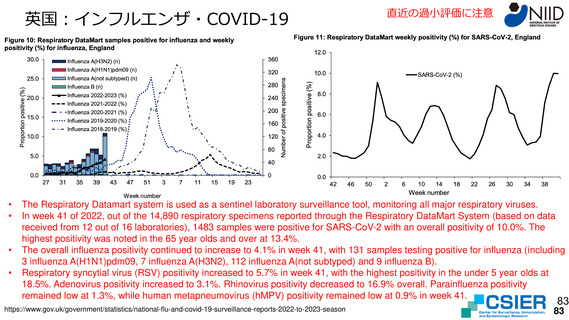よむ、つかう、まなぶ。
資料3-2 鈴木先生提出資料 (87 ページ)
出典
| 公開元URL | https://www.mhlw.go.jp/stf/seisakunitsuite/bunya/0000121431_00395.html |
| 出典情報 | 新型コロナウイルス感染症対策アドバイザリーボード (第104回 10/26)《厚生労働省》 |
ページ画像
ダウンロードした画像を利用する際は「出典情報」を明記してください。
低解像度画像をダウンロード
プレーンテキスト
資料テキストはコンピュータによる自動処理で生成されており、完全に資料と一致しない場合があります。
テキストをコピーしてご利用いただく際は資料と付け合わせてご確認ください。
南半球/南米(温暖地域)
• In temperate South America, influenza detections increased due to increased activity in Argentina through week 38.
Elsewhere, influenza activity remained low (Chile) or below the seasonal threshold. In Argentina, influenza activity
increased to moderate levels and the majority of influenza detections were A viruses with influenza A(H1N1)pdm09
predominant among the subtyped A viruses. Influenza B viruses were also reported. This increase follows an
epidemic of influenza which peaked in March. In June and July, activity was below the seasonal threshold and then
began to increase again. ILI and SARI cases remain low. Influenza detections of predominantly A(H3N2) increased
slightly in Brazil but remained below the seasonal threshold and remained at low levels in Chile. In Chile, ILI
remained at moderate levels and SARI activity was above the epidemic threshold at low intensity level. In Paraguay
and Uruguay, influenza activity was at baseline levels and SARI activity was at low intensity, but it remained at
above average levels for the time of year in Uruguay. RSV activity increased in Brazil and
87
87
Uruguay and decreased or remained low in the other countries in the subregion.
• In temperate South America, influenza detections increased due to increased activity in Argentina through week 38.
Elsewhere, influenza activity remained low (Chile) or below the seasonal threshold. In Argentina, influenza activity
increased to moderate levels and the majority of influenza detections were A viruses with influenza A(H1N1)pdm09
predominant among the subtyped A viruses. Influenza B viruses were also reported. This increase follows an
epidemic of influenza which peaked in March. In June and July, activity was below the seasonal threshold and then
began to increase again. ILI and SARI cases remain low. Influenza detections of predominantly A(H3N2) increased
slightly in Brazil but remained below the seasonal threshold and remained at low levels in Chile. In Chile, ILI
remained at moderate levels and SARI activity was above the epidemic threshold at low intensity level. In Paraguay
and Uruguay, influenza activity was at baseline levels and SARI activity was at low intensity, but it remained at
above average levels for the time of year in Uruguay. RSV activity increased in Brazil and
87
87
Uruguay and decreased or remained low in the other countries in the subregion.







